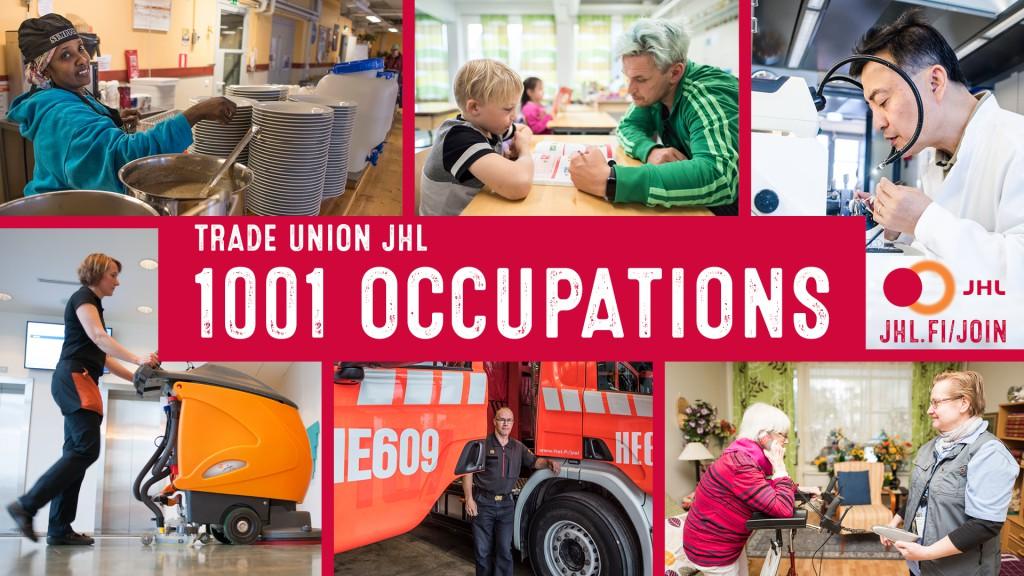Trade Union JHL’s services are closed on Easter. The telephone services of Membership Service, Education Advice, and Employment Advice are closed on Friday 18 April and Monday 21 April.
Municipal sector’s negotiators consult with the National Conciliator – what happens during conciliation and why?

Negotiations on the collective agreements of the municipal sector and wellbeing services counties continued in the National Conciliator’s office on Monday 7 March. The wellbeing services counties will start operating in January 2023. At the end of February, the employer party interrupted the negotiations, and the organisations representing the employee party started to file strike warnings to speed up the negotiations. This led the parties to consult with the conciliator.
On Monday 7 March, conciliation on the key disputes concerning the collective agreement of the municipal sector and wellbeing services counties was started in National Conciliator Vuokko Piekkala’s office. During the first individual meetings with the parties, Piekkala’s aim was to find out about the key sources of dispute in order to work on solution proposals.
– When organisations give notice of strikes, the National Conciliator is obligated by law to help the parties find a solution in order to avoid the strikes, JHL’s Bargaining Director Kristian Karrasch explains.
Key sources of dispute for the conciliation
The first source of dispute is pay settlement, i.e. how large pay raises there will be during the upcoming agreement period.
– Local Government and County Employers KT has not submitted a pay regime offer during the negotiations, Karrasch states.
Another matter that requires conciliation is a separate pay regime. According to JHL’s Bargaining Director, the pay regimes have to do with pay raises, but the pay regimes would last several years. In addition to so-called regular pay raises, pay regimes would help raise salaries to a competitive level for the employees in municipalities and wellbeing services counties. The employer has not warmed up to this at all.
– JHL has held on to its view that the pay regime must be extended to the entire municipal and welfare sector, to all the agreement sectors.
A third key source of dispute has to do with how the municipal and welfare sector agreements will in the future be negotiated.
– In our opinion, the agreements of municipalities and wellbeing services counties should also in the future be negotiated on at a shared table, as agreed upon in the previous agreement reached in May 2020. In our opinion, the best way to safeguard and further develop the sector’s terms and conditions of employment is at a shared table. This is a public sector, and it is not beneficial for the strength of employees to divide the municipal sector and, on the other hand, wellbeing services counties into separate tables where the same parties sit anyway, Karrasch repeats the union's viewpoint.
How the conciliation process will move forward
The conciliation process has only just begun. There are several possibilities of finding a solution.
– At this point, I will not speculate on the final outcome. It could be that the talks with the conciliator will give us as negotiation parties the tools to continue negotiating on our own and thus come to a solution. On the other hand, we could end up in a situation where the National Conciliator will make a proposal for conciliation, Karrasch ponders on the current situation.
In both cases, the solution will be processed by the managements of both parties in due course. The Finnish conciliation system does not oblige the parties to a dispute to settle the dispute through conciliation.
– One procedure of labour market activities is that only the National Conciliator informs about what is happening during the conciliation in order to guarantee labour peace for the process. That’s why our news articles on how the negotiations are proceeding will in the future be shorter than before, Karrasch says.
The negotiation parties’ next meeting in the National Conciliator's office will take place on Wednesday 9 March.
More information: JHL’s Bargaining Director Kristian Karrasch, 040 7289 046